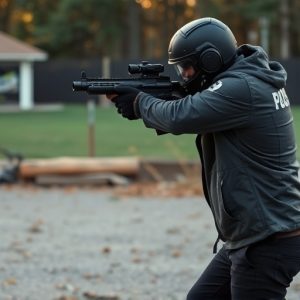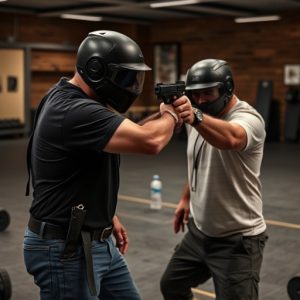Stun Gun Safety: Voltage, Choice, Range & Legal Tips for Women’s Self-Defense
For women seeking the best self-defense stun gun, key considerations include voltage (ideally 50,000…….
For women seeking the best self-defense stun gun, key considerations include voltage (ideally 50,000-120,000 volts), lightweight design, lengthy battery life, and safety features like alarms and automatic shutdown. High-quality stun guns offer 5-15 feet (1.5-4.6m) knockdown distance and advanced technology for longer ranges. Understanding local laws regarding stun gun ownership is crucial, as regulations vary widely. Proper care, including regular cleaning and storage, ensures optimal performance.
“In today’s unpredictable world, personal safety is paramount, especially for women seeking effective self-defense options. This comprehensive guide delves into the intricate details of stun guns, a powerful tool for deterring potential threats. We explore ‘understanding stun gun voltage’ and its impact on safety, while highlighting key features to consider in the ‘best self-defense stun gun for women’. From range and knockdown distance to essential safety features and legal aspects, this article equips readers with knowledge to make informed decisions, ensuring optimal performance and peace of mind.”
- Understanding Stun Gun Voltage: What It Means for Safety
- Key Factors in Choosing the Best Self-Defense Stun Gun for Women
- Stun Gun Range and Effective Knockdown Distance
- Safety Features to Look for in a High-Quality Stun Gun
- Legal Considerations for Owning and Carrying a Stun Gun
- Maintenance and Care Tips to Ensure Optimal Performance
Understanding Stun Gun Voltage: What It Means for Safety

Stun guns, often considered a powerful tool for personal safety, operate by delivering an electric shock to incapacitate an attacker. The effectiveness and safety of a stun gun are directly linked to its voltage. For self-defense purposes, especially among women looking for the best self-defense stun gun, understanding voltage range is crucial.
A typical stun gun’s voltage ranges from 50,000 to 120,000 volts. This range ensures that the device can generate enough electrical energy to disrupt muscle control in an aggressor while keeping the user safe. Lower voltages might not be sufficient for a stun effect, while higher voltages, if not properly controlled, could pose risks to the user and bystanders. Thus, when choosing a self-defense stun gun, it’s essential to opt for one within the recommended voltage range, typically around 100,000 volts, which strikes an optimal balance between effectiveness and safety.
Key Factors in Choosing the Best Self-Defense Stun Gun for Women

When selecting a self-defense stun gun tailored for women, several key factors come into play to ensure effectiveness and peace of mind. One of the primary considerations is voltage range. A stun gun’s voltage determines its impact and reach, with higher voltages offering more power but also requiring closer proximity to the target. For women who may be in situations where they need to deter an attacker from a distance, a stun gun with a voltage range between 4-15 million volts is ideal. This range allows for a safe yet effective level of protection without risking permanent injury if used appropriately.
Additionally, weight and size are crucial, especially for women who might carry the device daily or keep it in an easily accessible location. Lightweight and compact stun guns are more convenient for carrying, ensuring they can be readily used when needed. Battery life is another important aspect; longer battery life means less frequent replacements, providing constant protection without interruption. Features like a built-in alarm, flashlight, or multiple activation modes further enhance the capabilities of a self-defense stun gun, making it a more versatile tool for personal safety.
Stun Gun Range and Effective Knockdown Distance
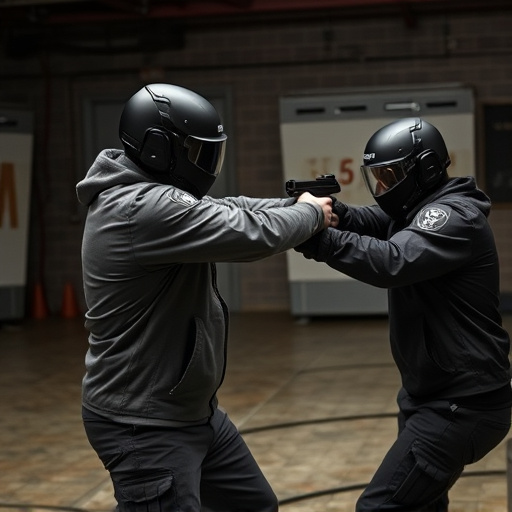
When considering a best self-defense stun gun for women, understanding the device’s range and knockdown distance is paramount. These factors determine the level of protection offered in various scenarios. The typical stun gun voltage range varies from 30,000 to 150,000 volts, with some advanced models exceeding 200,000 volts. However, the effective knockdown distance—the actual range where the stun gun is guaranteed to incapacitate an attacker—is usually between 5 and 15 feet (1.5 to 4.6 meters).
This distance can vary based on several factors, including the stun gun’s design, quality of construction, and the user’s technique. High-quality stun guns with advanced technology tend to have longer effective ranges, ensuring users can maintain a safe distance during self-defense situations. This is especially crucial for women who might be at a disadvantage in physical confrontations due to size and strength disparities with potential assailants.
Safety Features to Look for in a High-Quality Stun Gun
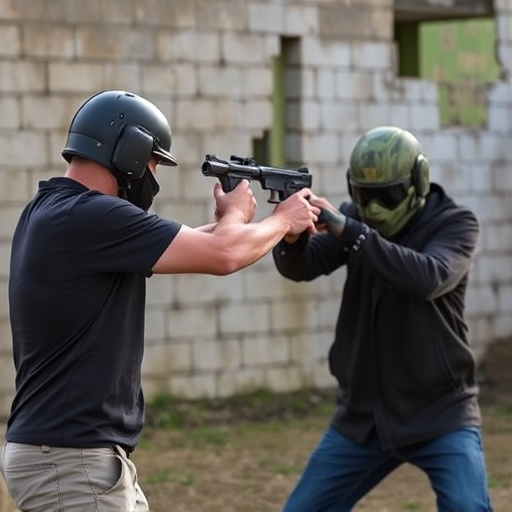
When choosing a stun gun, especially as a means of self-defense for women, safety should be the top priority. High-quality stun guns are designed with advanced safety features to ensure user protection and minimize risks. Look for models that incorporate smart safety mechanisms like automatic shutdown after activation, which prevents accidental continued discharge. This feature is crucial in preventing excessive use and potential harm to the user or bystanders.
Additionally, consider stun guns with built-in safety switches, allowing users to activate the device only when intended. Some advanced models even have LED indicators and audio signals to confirm successful activation. These safety specs are essential for a best self-defense stun gun for women, ensuring that it operates effectively while protecting its wielder from unintended consequences.
Legal Considerations for Owning and Carrying a Stun Gun
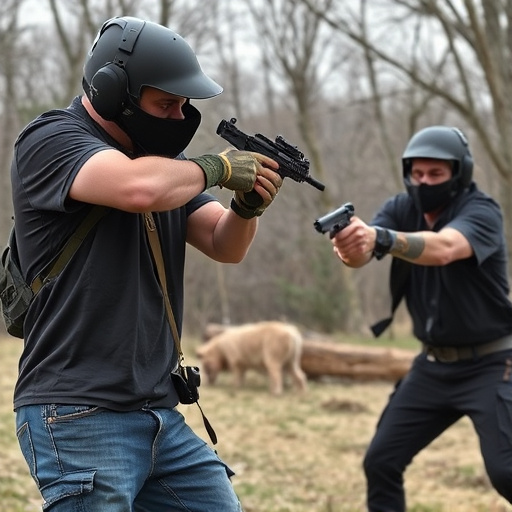
When considering the purchase of a stun gun, especially as a means of self-defense for women, understanding legal considerations is paramount. The legality of owning and carrying a stun gun varies significantly across different jurisdictions, with some states having strict regulations while others are more permissive. It’s crucial to research and comply with local laws to avoid any legal repercussions.
For those seeking the best self-defense stun gun for women, staying informed about these regulations is essential. Many regions allow individuals over a certain age (often 18 or 21) to carry non-lethal self-defense devices like stun guns with proper licensing and registration. Women interested in personal safety can explore legal options, ensuring they acquire their stun gun from reputable sources and follow all necessary procedures for safe and legal carrying.
Maintenance and Care Tips to Ensure Optimal Performance
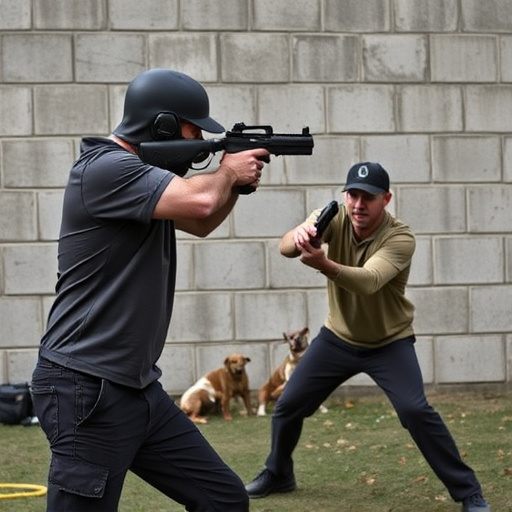
To ensure your best self-defense stun gun for women remains in top condition and delivers optimal performance when needed, proper maintenance and care are crucial. Regular cleaning is essential; wipe down the device with a soft, damp cloth to remove any dirt or debris, especially after each use. Avoid getting the stun gun wet; water can damage internal components. A quick dry cloth after washing ensures it’s thoroughly dried before storage.
Storing your stun gun properly is also vital. Keep it in a secure, dedicated case to protect it from impact and physical wear. Avoid extreme temperatures and direct sunlight, which can degrade the device over time. Periodically check the battery level, as a dead battery can render the stun gun unusable during an emergency. Following these simple maintenance tips will help ensure your self-defense tool is always ready when you need it most.
When selecting a stun gun, prioritizing safety is paramount, especially for women looking for effective personal protection. Understanding voltage ranges, familiarizing yourself with key features like pulse duration and current strength, and considering legal restrictions are essential steps. The right stun gun not only offers a reliable knockout distance but also includes advanced safety mechanisms to prevent accidental discharge. For women seeking the best self-defense stun gun, thorough research and consideration of these factors will ensure you make an informed choice for your safety and peace of mind.

